
RADIOCHEMISTRY
Scope & Guideline
Advancing Knowledge in the World of Radioactive Research
Introduction
Aims and Scopes
- Nuclear Chemistry and Radioactive Waste Management:
Research pertaining to the chemistry of radioactive elements, including their extraction, separation, and management techniques in the context of nuclear waste. - Radiopharmaceuticals and Medical Applications:
Studies focused on the development and application of radiopharmaceuticals for diagnostic and therapeutic purposes in nuclear medicine. - Environmental Radioactivity and Radioecology:
Investigations into the distribution, behavior, and impact of natural and artificial radionuclides in various environmental contexts, including soil, water, and sediment. - Analytical Techniques in Radiochemistry:
Development and refinement of analytical methodologies for measuring and characterizing radionuclides, including advanced spectroscopic and chromatographic techniques. - Sorption and Separation Techniques:
Research on the sorption properties and separation techniques for radionuclides from various matrices, including aqueous and solid media. - Isotope Chemistry and Exchange Processes:
Studies on isotope exchange processes and the chemical behavior of isotopes in different environments and applications.
Trending and Emerging
- Nanotechnology in Radiochemistry:
There is a growing interest in the application of nanomaterials and nanotechnology for radiochemical applications, particularly in the development of advanced sorbents and carriers for radionuclides in nuclear medicine. - Green Chemistry Approaches:
Emerging trends emphasize the adoption of environmentally friendly practices in radiochemistry, including the use of bio-sorbents and sustainable extraction methods for radionuclide recovery. - Advanced Characterization Techniques:
The use of sophisticated analytical techniques such as X-ray photoelectron spectroscopy (XPS) and advanced mass spectrometry is on the rise, facilitating deeper insights into the behavior and properties of radionuclides. - Interdisciplinary Research Linking Radiochemistry with Environmental Science:
A notable trend is the integration of radiochemistry with environmental science, focusing on the impacts of radionuclides in ecosystems and the development of remediation strategies. - Development of Novel Radiopharmaceuticals:
There is an increasing emphasis on the synthesis and evaluation of new radiopharmaceuticals, reflecting the ongoing advancements in medical applications and the need for improved diagnostic and therapeutic agents.
Declining or Waning
- Traditional Solvent Extraction Techniques:
There has been a noticeable decline in the publication of studies focusing solely on conventional solvent extraction methods for radionuclide recovery, as newer, more efficient methods gain prominence. - Basic Research on Radionuclide Behavior in Aqueous Solutions:
Research that primarily focuses on fundamental interactions of radionuclides in aqueous environments is becoming less frequent, potentially overshadowed by more applied research that addresses specific environmental or technological challenges. - General Studies on Natural Radioactivity Levels:
While still relevant, the general assessment of natural radioactivity levels in various geographical regions has seen reduced publication frequency, possibly due to a shift towards more targeted studies that address specific contamination events or remediation strategies.
Similar Journals
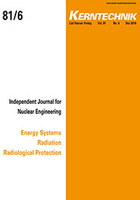
KERNTECHNIK
Exploring the frontiers of materials and energy science.KERNTECHNIK is a distinguished journal specializing in the fields of Materials Science, Nuclear and High Energy Physics, and Nuclear Energy and Engineering. Published by WALTER DE GRUYTER GMBH, this journal has continuously contributed to advancing knowledge and research in nuclear technologies and related safety measures since its inception in 1969. With an ISSN of 0932-3902 and an E-ISSN of 2195-8580, KERNTECHNIK serves as a vital platform for academics and professionals seeking to delve into both theoretical and practical aspects of nuclear science and technology. Though listed in the Q4 quartile across multiple categories in 2023, the journal's commitment to publishing rigorously peer-reviewed articles ensures that it remains a respected resource, facilitating academic discourse and innovation. It is particularly aligned for those conducting research or working in safety, risk, reliability, and quality within the nuclear sector, and its extensive historical archive allows for in-depth exploration of evolving technologies. Aimed at foster cooperation between researchers, policymakers, and industry experts globally, KERNTECHNIK continues to play an important role in shaping the future of nuclear science.

JOURNAL OF RADIOANALYTICAL AND NUCLEAR CHEMISTRY
Innovating the future of analytical chemistry and safety.JOURNAL OF RADIOANALYTICAL AND NUCLEAR CHEMISTRY, published by Springer, serves as a vital platform for the dissemination of research in the fields of analytical chemistry, nuclear science, and radiochemistry. With an ISSN of 0236-5731 and an E-ISSN of 1588-2780, this journal has been a beacon of innovation and scholarly communication since its inception, transitioning from converged years of 1977-1979 to its current continuity from 1984 to 2024. Positioned in the Q3 category for analytical chemistry and other related fields such as health, toxicology, and nuclear engineering, it boasts significant standings in the Scopus rankings, reflecting its relevance and impact within these disciplines. The journal emphasizes open access, encouraging broader accessibility to quality research, which is critical for students, professionals, and ongoing global scientific discussions. As a leader in its domain, the JOURNAL OF RADIOANALYTICAL AND NUCLEAR CHEMISTRY is committed to advancing the understanding of radioactive materials, environmental safety, and health applications, ensuring its readers remain at the forefront of emerging trends and discoveries.
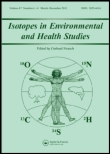
ISOTOPES IN ENVIRONMENTAL AND HEALTH STUDIES
Exploring the Nexus of Isotopes, Environment, and HealthISOTOPES IN ENVIRONMENTAL AND HEALTH STUDIES is a pivotal journal published by Taylor & Francis Ltd, focused on disseminating cutting-edge research within the fields of environmental science and health. With an established history since its inception in 1995 and a convergence period extending to 2024, the journal plays a significant role in advancing the understanding of isotopic applications in environmental and health-related studies. Currently classified within the Q3 category in Environmental Chemistry and Q2 in both Environmental Science (miscellaneous) and Inorganic Chemistry, it ranks favorably among its peers, holding a position that highlights its academic relevance and impact. Although the journal does not operate on an open access model, it remains a crucial resource for researchers and professionals seeking in-depth analysis and findings that underpin the relationship between isotopes and environmental processes. Its contributions cater to a diverse audience keen on exploring innovative methodologies and interdisciplinary approaches that foster sustainability and public health.

Nuclear Physics and Atomic Energy
Advancing knowledge in nuclear physics and energy.Nuclear Physics and Atomic Energy is a reputable open-access journal that focuses on the fields of nuclear physics and high-energy physics, providing a forum for researchers, professionals, and students to share their findings and advancements. Published by the Institute of Nuclear Research, National Academy of Sciences of Ukraine, this journal has been committed to disseminating knowledge since its inception in 2006, ensuring that scientific advancements remain accessible to a global audience. With an ISSN of 1818-331X and an E-ISSN of 2074-0565, the journal features a diverse array of articles that span the continued exploration and application of nuclear phenomena. Although currently categorized in the Q4 quartile for Nuclear and High Energy Physics in 2023, the journal is steadily working towards increasing its impact and engagement within the academic community. With a Scopus rank of #74 out of 87 in its category, it serves as a valuable resource for advancing crucial research in a vital scientific area. Researchers are encouraged to contribute their innovative studies to foster collaboration and knowledge sharing in this dynamic field.
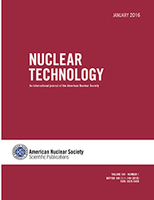
NUCLEAR TECHNOLOGY
Connecting Scholars in the Nuclear Technology SphereNUCLEAR TECHNOLOGY is a leading academic journal published by TAYLOR & FRANCIS INC, dedicated to the expansive field of nuclear science and engineering. With a robust ISSN of 0029-5450 and an E-ISSN of 1943-7471, this journal provides invaluable insights and cutting-edge research from 1971 to 2024. Positioned in the esteemed Q2 category for Condensed Matter Physics, Nuclear and High Energy Physics, and Nuclear Energy and Engineering, it boasts respectable Scopus rankings, underscoring its impact and relevance within the academic community. NUCLEAR TECHNOLOGY serves as a crucial platform for researchers, professionals, and students, fostering an exchange of knowledge that advances the understanding and application of nuclear technologies. While it operates on a subscription model, this journal remains a vital resource for those aiming to contribute to or stay at the forefront of developments in nuclear technology.

NUCLEAR MEDICINE REVIEW
Championing Excellence in Radiology ResearchNUCLEAR MEDICINE REVIEW is a distinguished journal in the field of radiology, nuclear medicine, and imaging, published by VIA MEDICA in Poland. Since its transition to an open access format in 1999, this journal has been dedicated to promoting the dissemination of knowledge and research findings across a global audience. With a focus on innovative approaches and advancements in nuclear medicine, it aims to serve as a key resource for researchers, professionals, and students who are working to further the understanding of nuclear imaging and its applications. In 2023, the journal was classified in the Q3 category within Radiology, Nuclear Medicine and Imaging, and Q4 in the broader category of Medicine (miscellaneous), highlighting its growing reputation in the academic community. As of the latest assessments, the journal has been ranked #235 out of 333 in its field according to Scopus metrics, reflecting its commitment to excellence and the relevance of its published works. The NUCLEAR MEDICINE REVIEW is a pivotal platform for those engaged in cutting-edge research, providing insights that drive the evolution of medical imaging and therapeutic techniques.
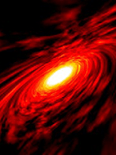
Annual Review of Nuclear and Particle Science
Connecting Theories and Discoveries in Particle PhysicsAnnual Review of Nuclear and Particle Science is a prestigious journal published by Annual Reviews, focused on the fields of nuclear and high-energy physics. With an impressive impact factor that reflects its authority and influence—ranked Q1 in its category and holding a commendable Scopus rank of #2 out of 87, placing it in the 98th percentile—the journal serves as an essential resource for researchers, professionals, and advanced students alike. Covering pivotal developments and comprehensive reviews in nuclear and particle physics since its inception in 1978, this journal offers unparalleled insights into cutting-edge research and theoretical advancements. While it is not open access, the value of its scholarly content is evidenced by its rigorous peer-review process and its role in shaping contemporary discourse within the scientific community. With contributions from leading experts and a commitment to disseminating foundational and emerging theories, the Annual Review of Nuclear and Particle Science is indispensable for those seeking a deep understanding of the complexities in these dynamic fields.
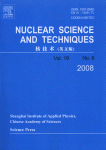
Nuclear Science and Techniques
Driving Progress in Nuclear Science and EngineeringNuclear Science and Techniques is a distinguished peer-reviewed journal published by Springer Singapore Pte Ltd, dedicated to advancing the fields of nuclear science and engineering. With an impressive impact factor reflected in its 2023 quartile rankings—Q2 in Nuclear and High Energy Physics and Q1 in Nuclear Energy and Engineering—the journal serves as a vital resource for researchers, professionals, and students alike. Covering a breadth of topics from nuclear physics to energy applications, it offers a platform for innovative research and developments in the nuclear domain. The journal, indexed under ISSN 1001-8042 and E-ISSN 2210-3147, aims to foster scientific exchange and collaboration within the community by publishing high-quality articles that contribute significantly to the field. Committed to maintaining an open-access ethos, it enhances visibility and accessibility of critical knowledge, making it an essential source for current insights and trends in nuclear science.
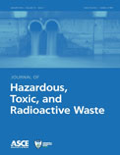
Journal of Hazardous Toxic and Radioactive Waste
Driving progress in civil engineering and public health.The Journal of Hazardous Toxic and Radioactive Waste, published by the ASCE-American Society of Civil Engineers, serves as a pivotal platform for the dissemination of innovative research in the fields of civil and environmental engineering, focusing on the management and remediation of hazardous materials. With an ISSN of 2153-5493 and an E-ISSN of 2153-5515, this journal has established its reputable presence since its inception, converging years from 2011 to 2025. It operates within esteemed Category Quartiles, ranking Q2 in Chemical Engineering, Environmental Engineering, and several related fields, making it a valuable resource for researchers and practitioners alike. Though not open access, its rigorous peer-review process ensures high-quality and impactful findings, underscoring its significance in advancing knowledge on waste management, environmental chemistry, and public health concerns. As a critical resource for professionals dedicated to addressing the growing challenges associated with hazardous and radioactive waste, this journal invites contributions that push the boundaries of scientific inquiry and practical application.
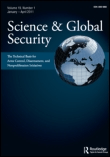
Science & Global Security
Exploring the Nexus of Science and SecurityScience & Global Security, published by Routledge Journals, Taylor & Francis Ltd, is an esteemed academic journal that explores the intersection of science, security, and global policy from an interdisciplinary perspective. Since its inception in 1989, the journal has served as a vital platform for disseminating research that addresses the complex challenges posed by security threats in a globalized world, including nuclear proliferation, environmental security, and technological impacts on peace. Although currently classified in the Q4 quartile within the Engineering (miscellaneous) category, the journal is dedicated to fostering dialogue among researchers, policymakers, and practitioners, making it a crucial resource for those engaged in the fields of security studies and international relations. The journal, based in the United Kingdom, operates on a subscription-based model, ensuring that high-quality research is accessible to a wide professional audience. By continuously welcoming diverse methodologies and perspectives, Science & Global Security plays an essential role in shaping informed discussions around the pressing security dilemmas of our time.